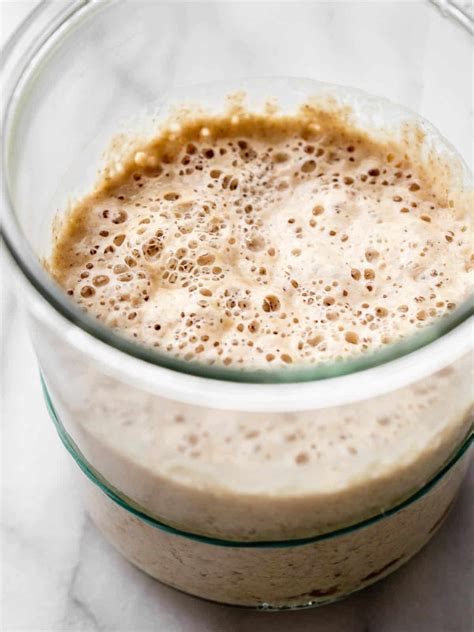Sourdough Starter Recipe: A Step-by-Step Guide to Baking Success
Are you ready to embark on a journey into the wonderful world of sourdough bread? The key to achieving that perfectly tangy, chewy loaf lies in cultivating your own sourdough starter. This seemingly simple mixture of flour and water is a living ecosystem of wild yeasts and bacteria, and nurturing it requires patience and care. But trust me, the rewards are well worth the effort! This comprehensive guide will walk you through each step, ensuring your starter thrives.
What is a Sourdough Starter?
A sourdough starter is a ferment—a mixture of flour and water that, over time, develops a thriving colony of naturally occurring yeasts and bacteria. These microorganisms are responsible for the characteristic sour flavor and unique texture of sourdough bread. It's essentially a living organism that needs to be fed regularly to stay alive and active. Think of it as a tiny, bubbly friend that helps you bake amazing bread!
Ingredients You'll Need:
- 100g (1 cup) Unbleached All-Purpose Flour: Avoid using bleached flour as it contains additives that can hinder starter development. Bread flour is also a good option for a more robust starter.
- 100g (1/2 cup + 2 tbsp) Non-chlorinated Water: Chlorinated water can kill the beneficial bacteria. Use filtered water or bottled water if you're unsure about your tap water.
Step-by-Step Sourdough Starter Recipe:
Day 1: The Initial Mix
- Combine Flour and Water: In a clean glass jar (a wide-mouth mason jar works great), combine the flour and water. Mix thoroughly until a smooth, thick paste forms. There might be some lumps, which is fine.
- Cover Loosely: Cover the jar loosely with a lid or plastic wrap. This allows for airflow while preventing dust and other contaminants from entering.
- Let it Rest: Place the jar in a warm spot (around 70-75°F or 21-24°C) away from direct sunlight.
Day 2-7: The Waiting Game (and Occasional Sniff Test!)
- Observe: Check your mixture once or twice a day. You might not see much activity initially.
- Patience is Key: Don't get discouraged if you don't see bubbles right away. The yeasts and bacteria need time to colonize.
- The Sniff Test (optional): After a few days, you can gently sniff your starter. A slightly sour or fermented smell is a good sign. However, if it smells foul (like rotten eggs), it might be contaminated, and you should start over.
Day 7-14: Signs of Life!
- Bubbles Appear: You should start to see some bubbles forming on the surface and throughout the mixture. This is a sign that your starter is becoming active.
- Double in Size: If your starter has roughly doubled in size and shows signs of fermentation, congratulations! You've successfully created a sourdough starter.
Feeding Your Starter (Ongoing):
- Discard: Before feeding, discard about half of your starter.
- Feed with Equal Parts: Feed your starter with equal parts fresh flour and non-chlorinated water. For example, if you have 100g of starter left, add 50g flour and 50g water.
- Mix Well: Mix well and cover again loosely.
- Repeat: Repeat this feeding process every 12-24 hours, or as needed to maintain activity. You'll learn your starter's rhythm over time.
Troubleshooting:
- No Activity: Try a warmer location. If it still doesn't work after a week, you might need to start over.
- Mold: If you see any mold, discard the starter and start again with fresh ingredients.
Conclusion:
Creating a sourdough starter is a rewarding and enriching experience. It's a testament to the power of nature and a testament to the patience and care you will have to show to your new little friend. With consistent care and feeding, your starter will become an essential tool in your baking journey, allowing you to create delicious, artisanal bread for years to come! Happy baking!
